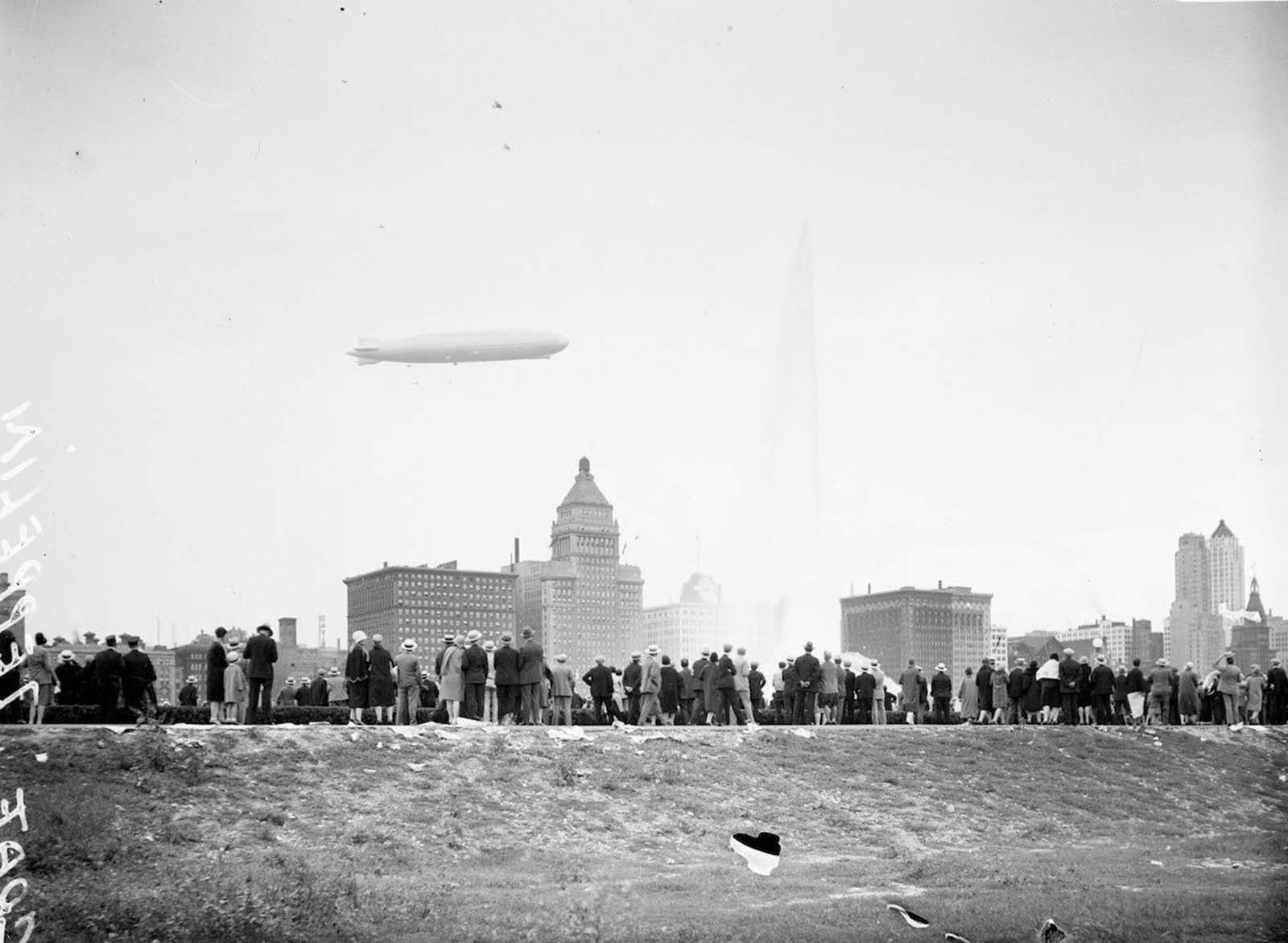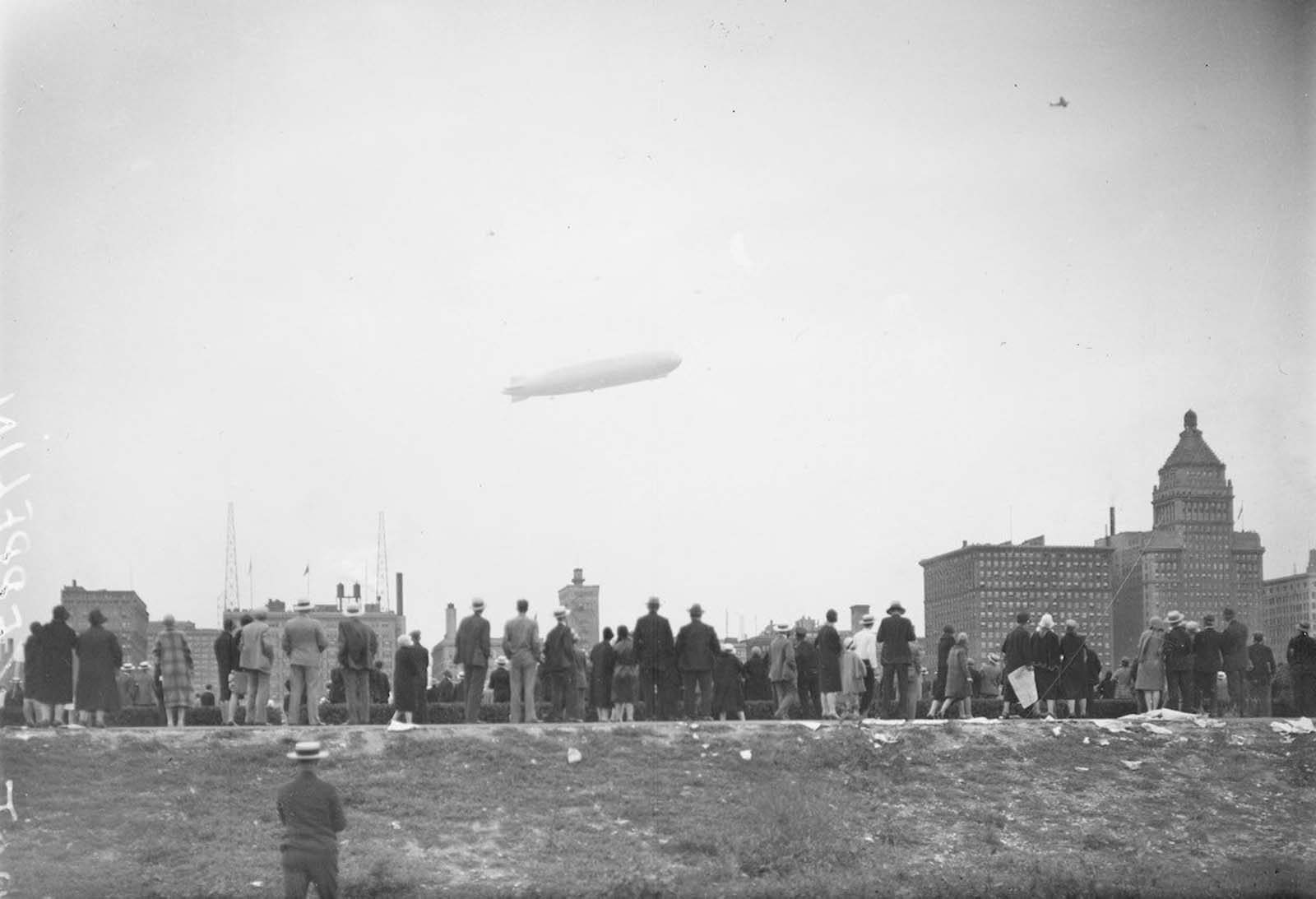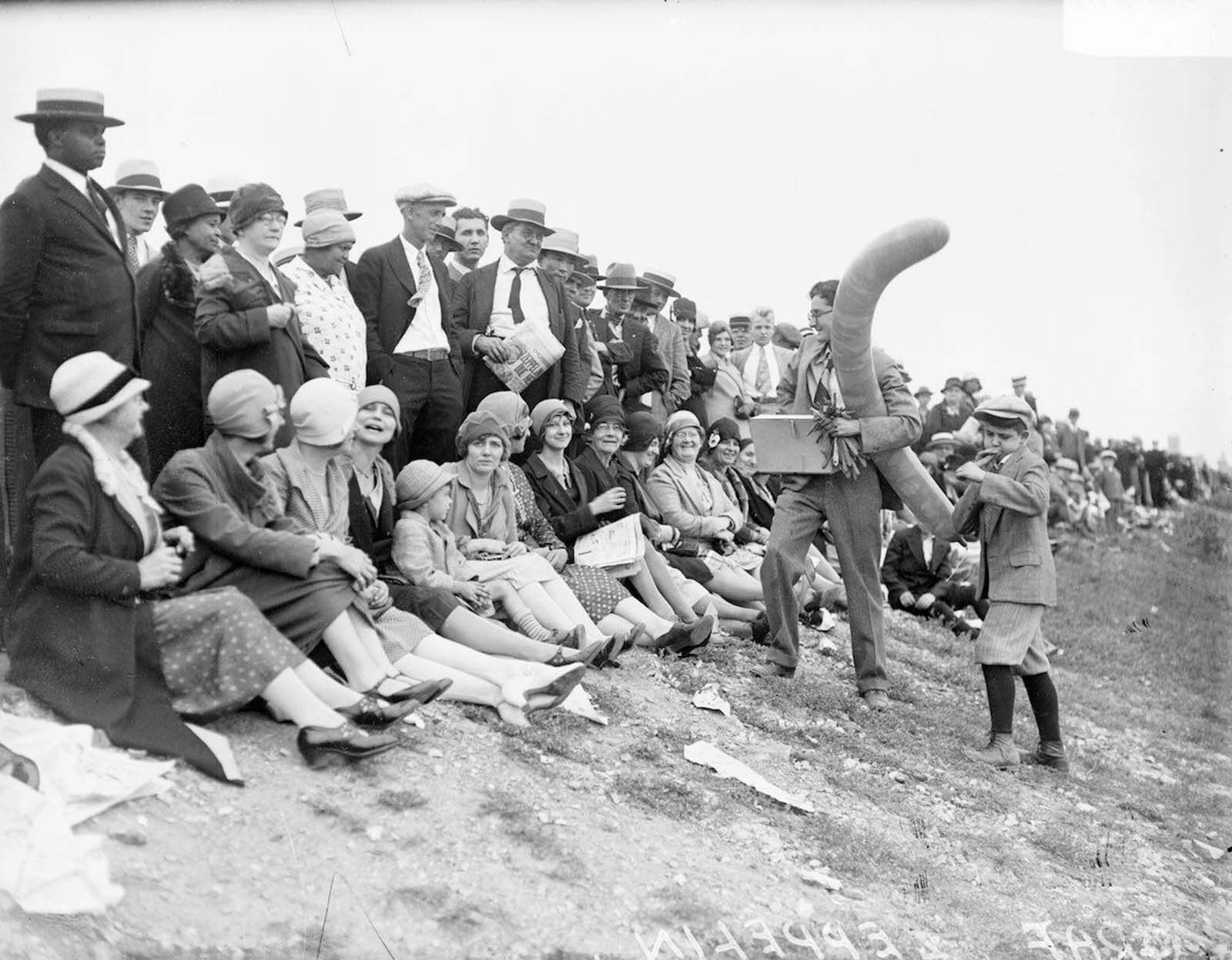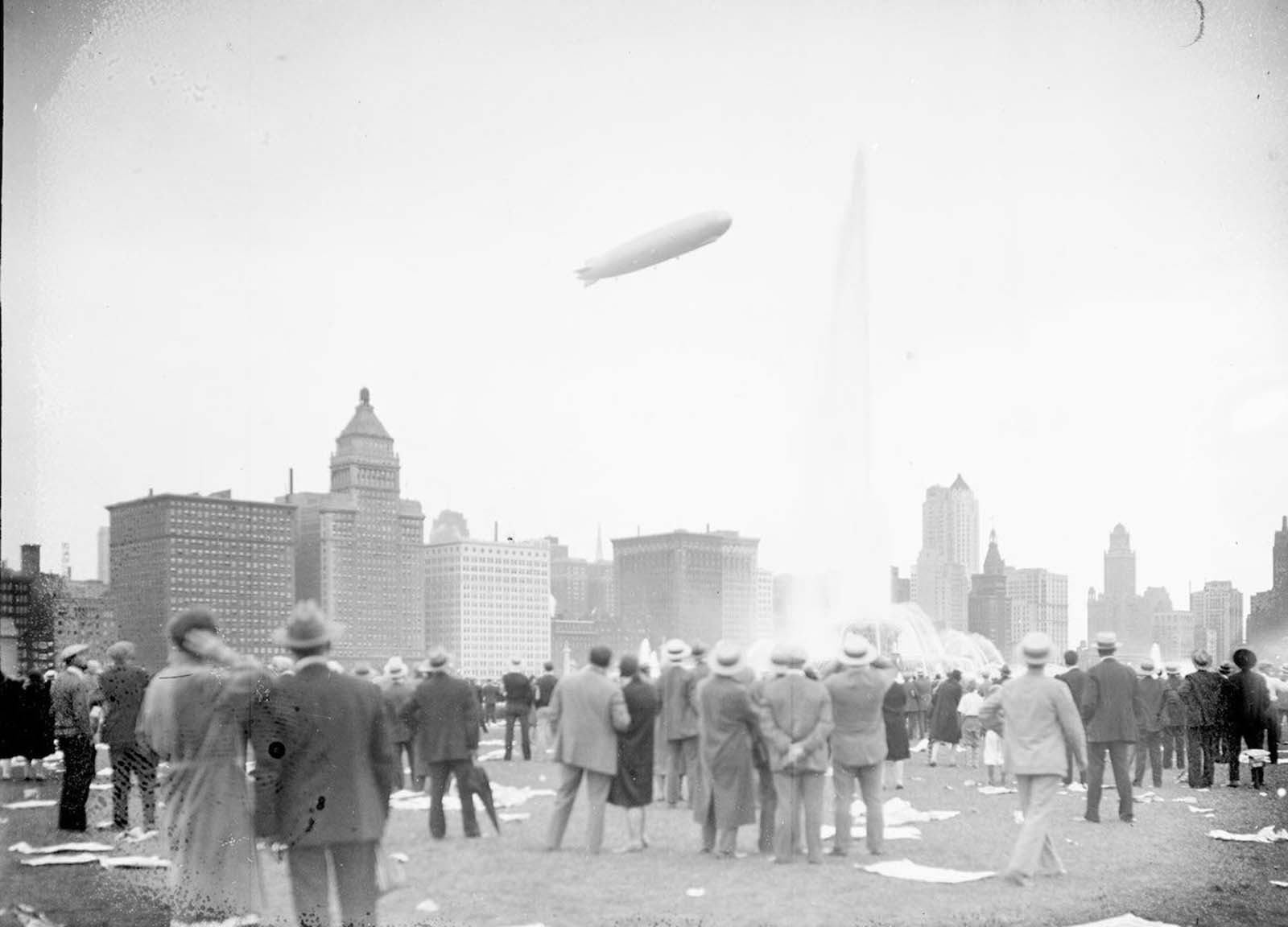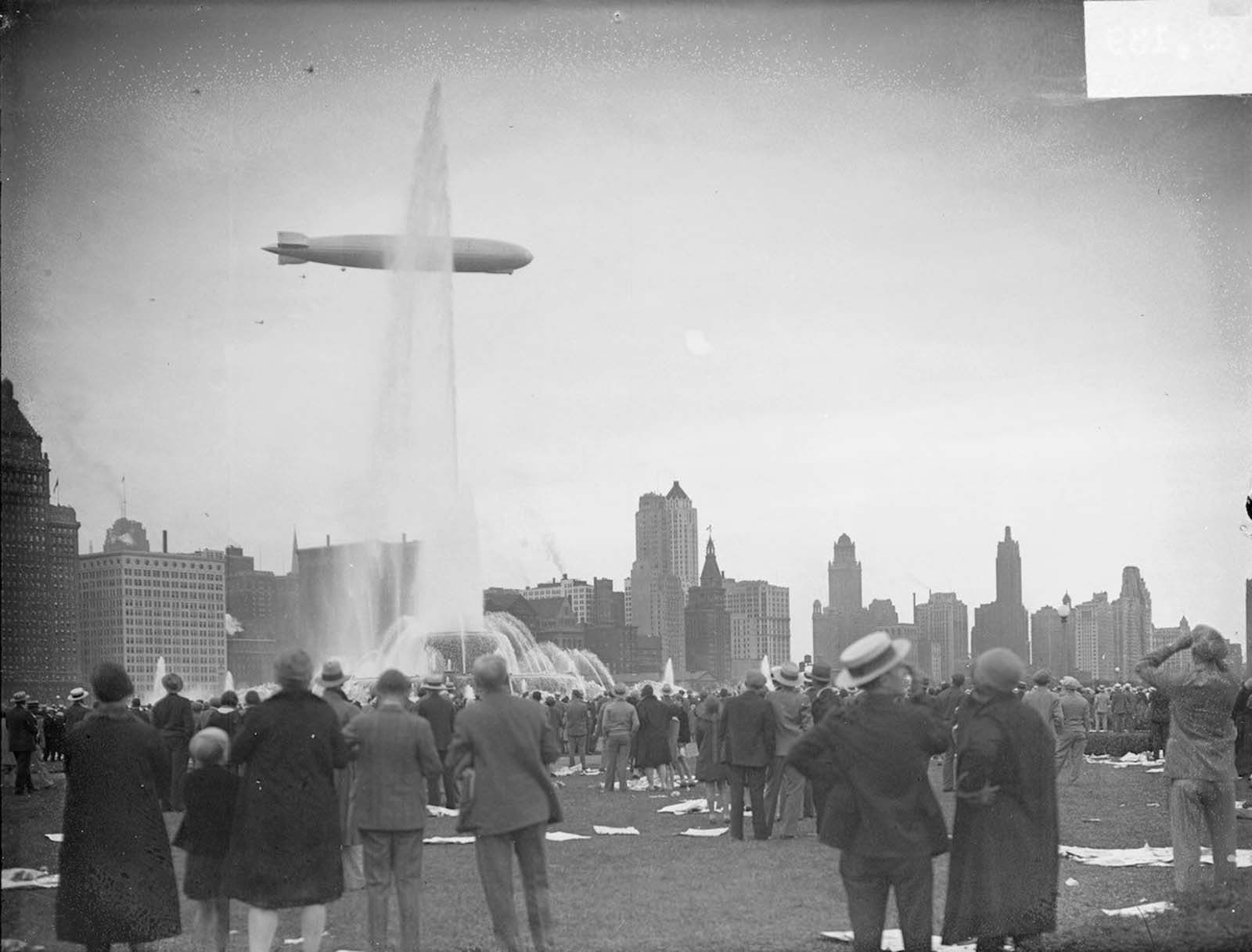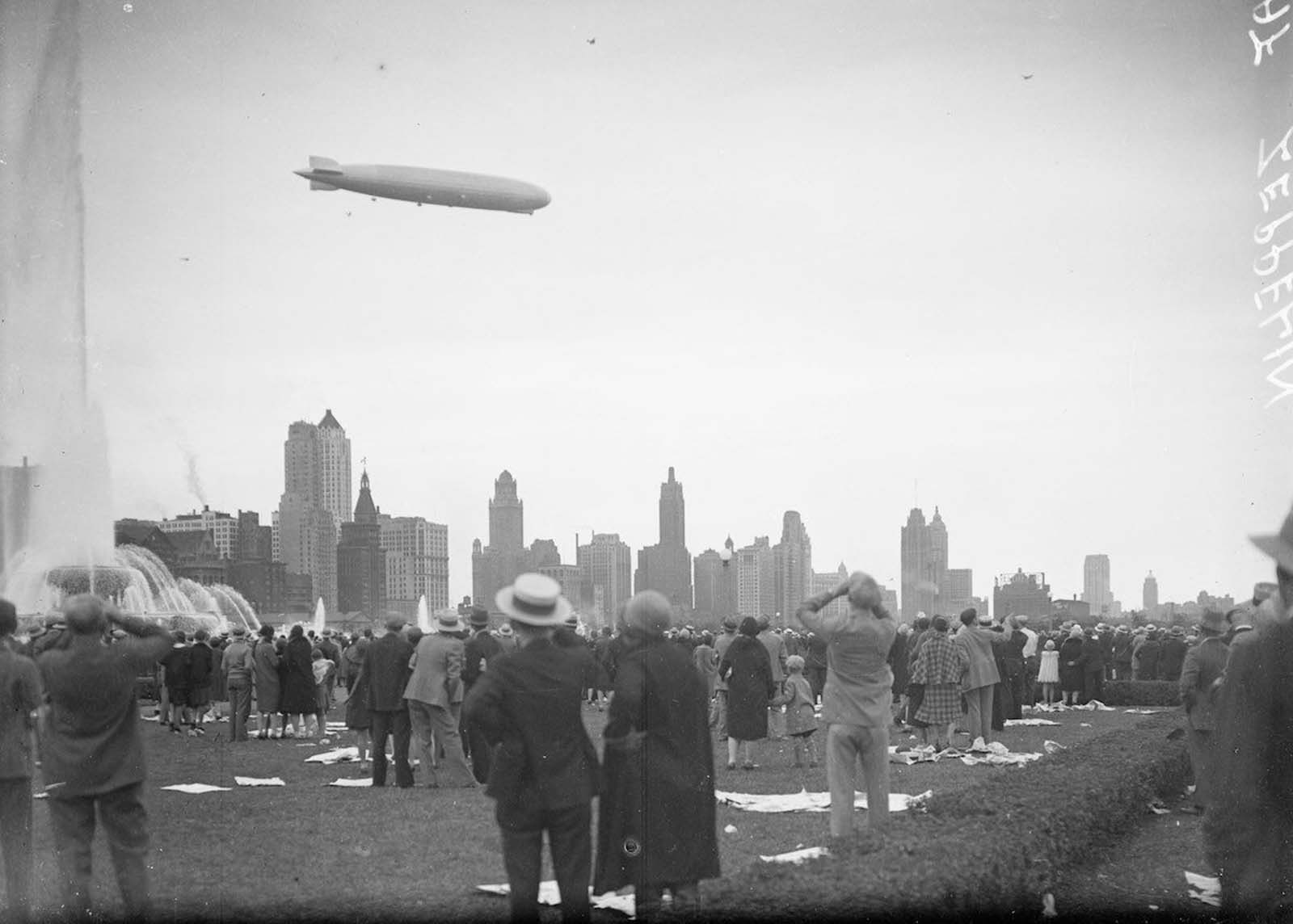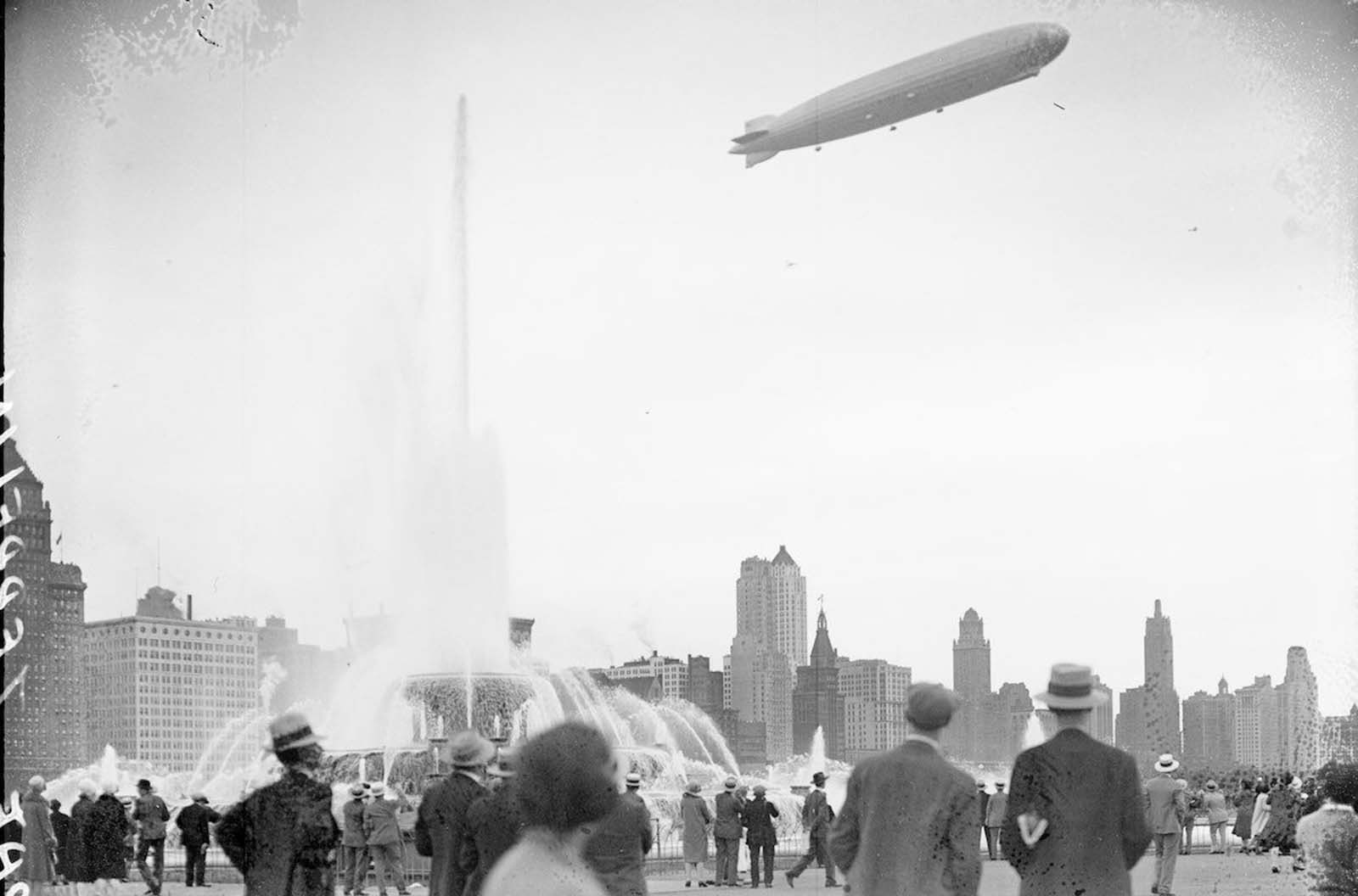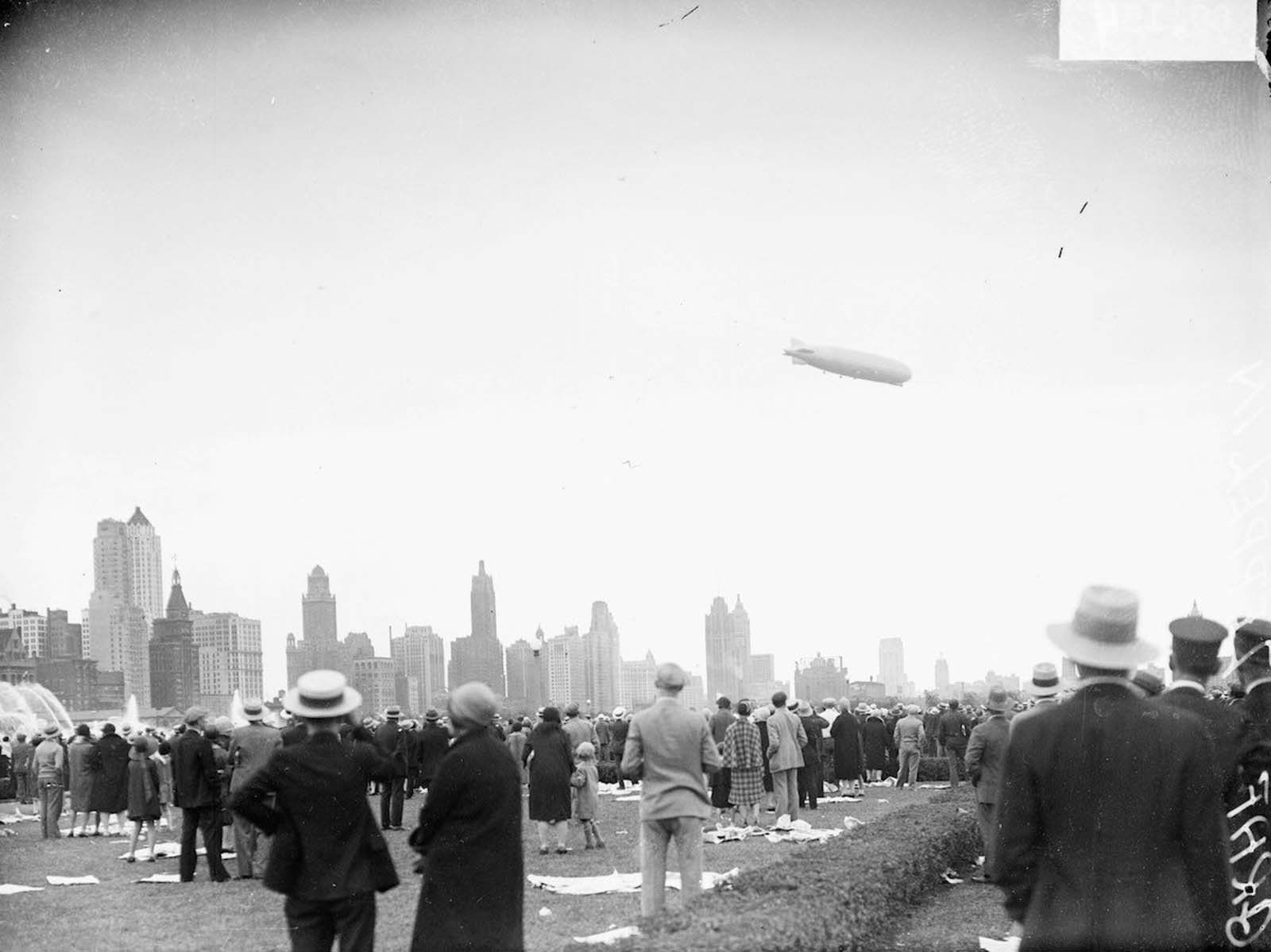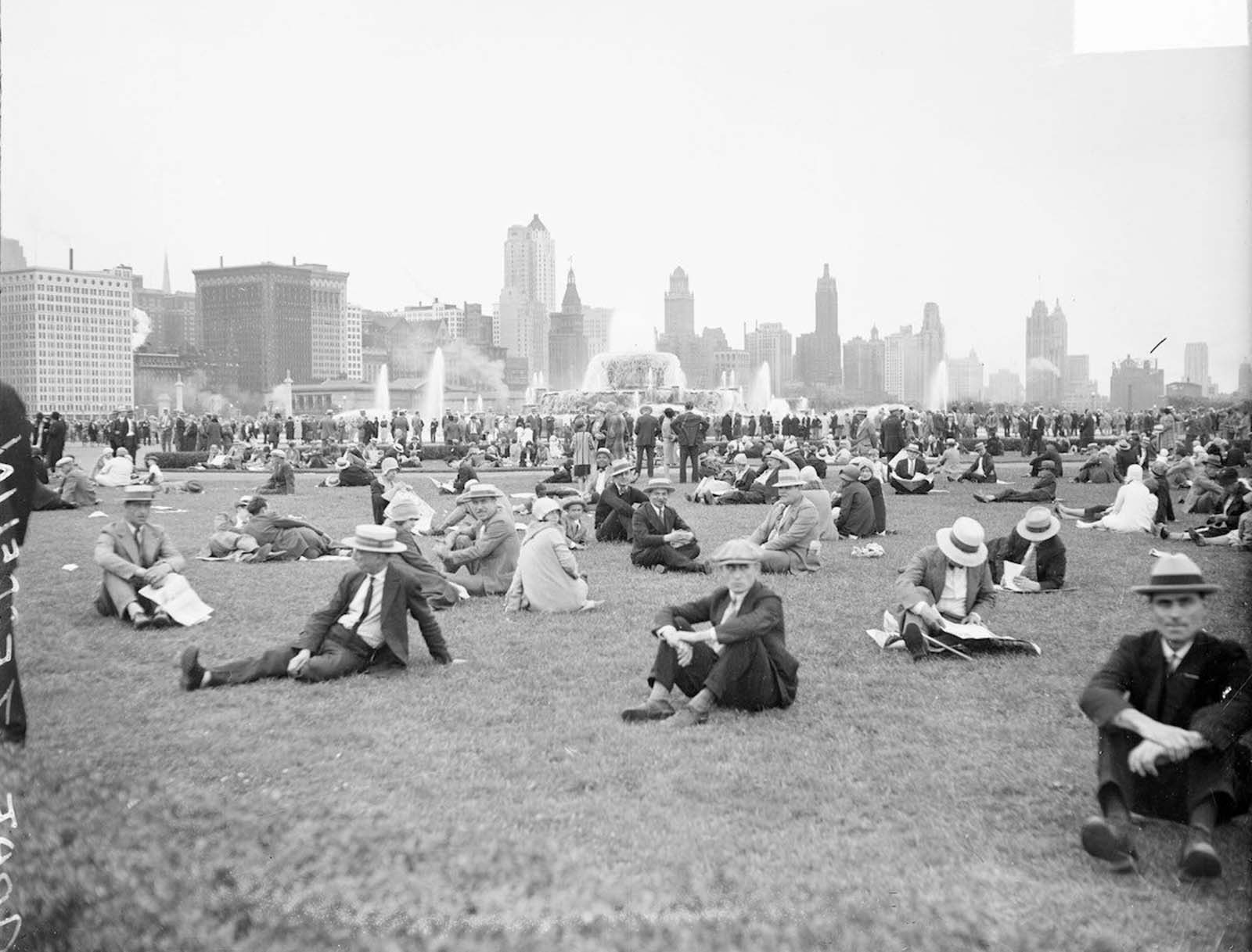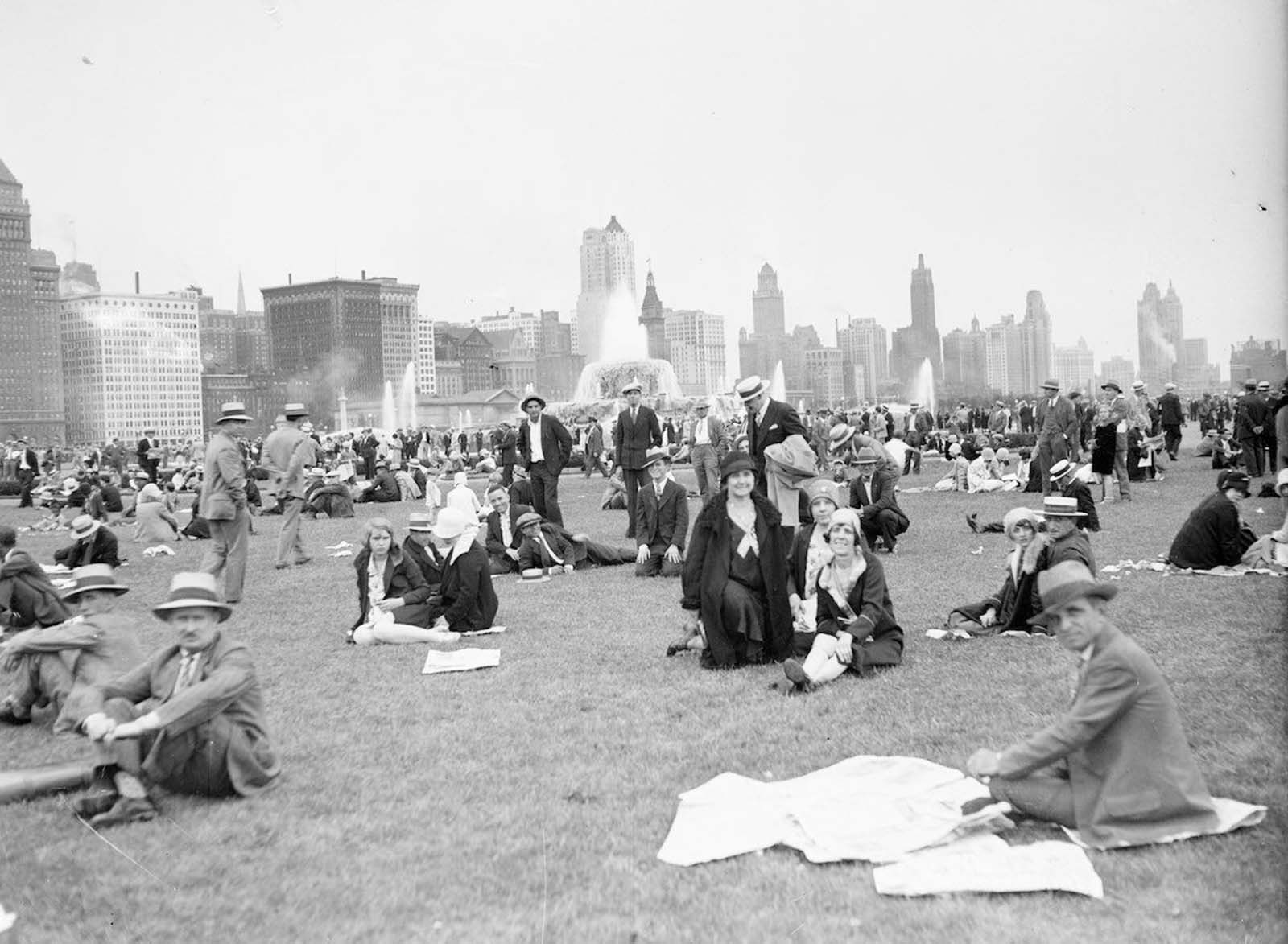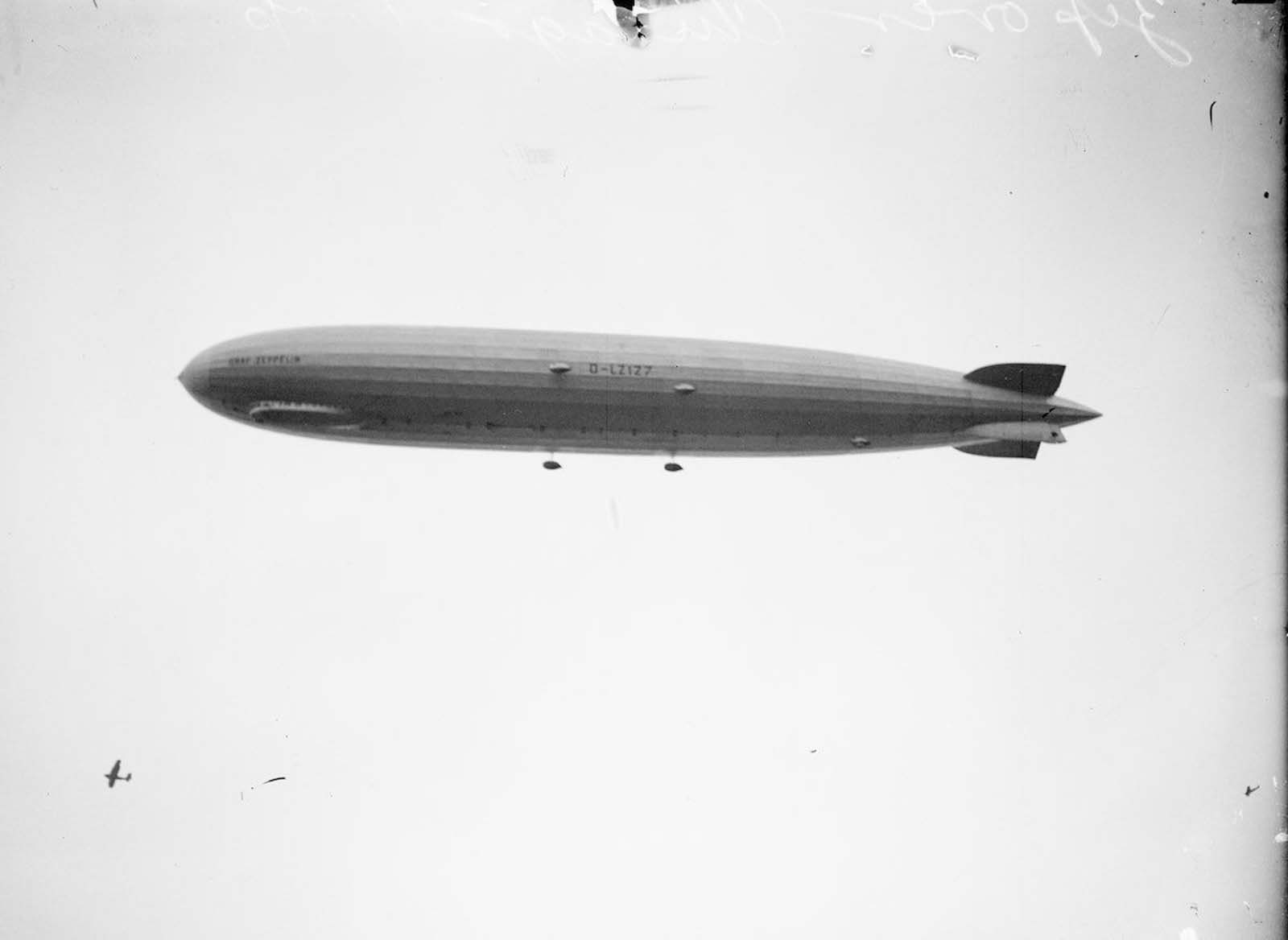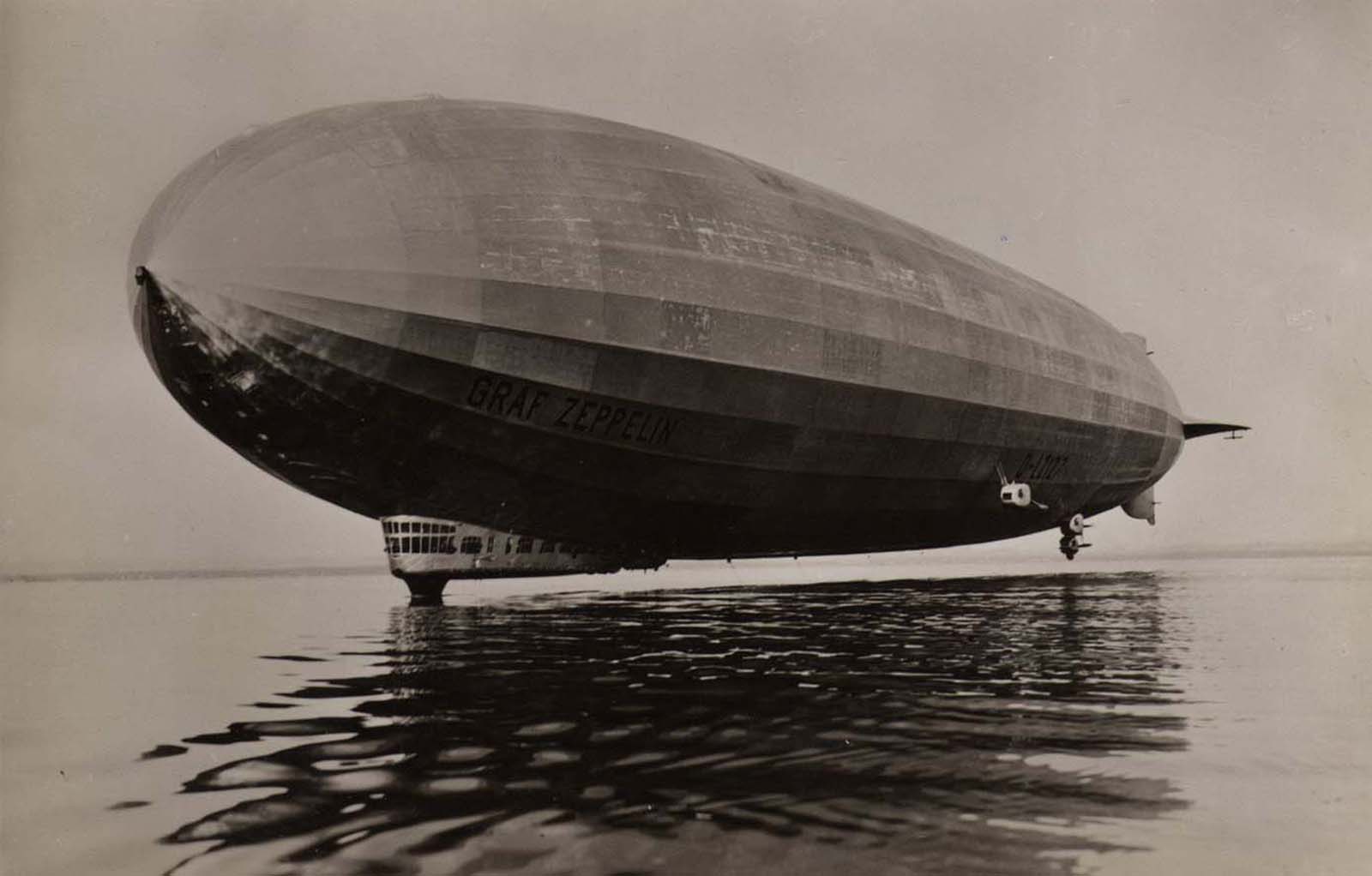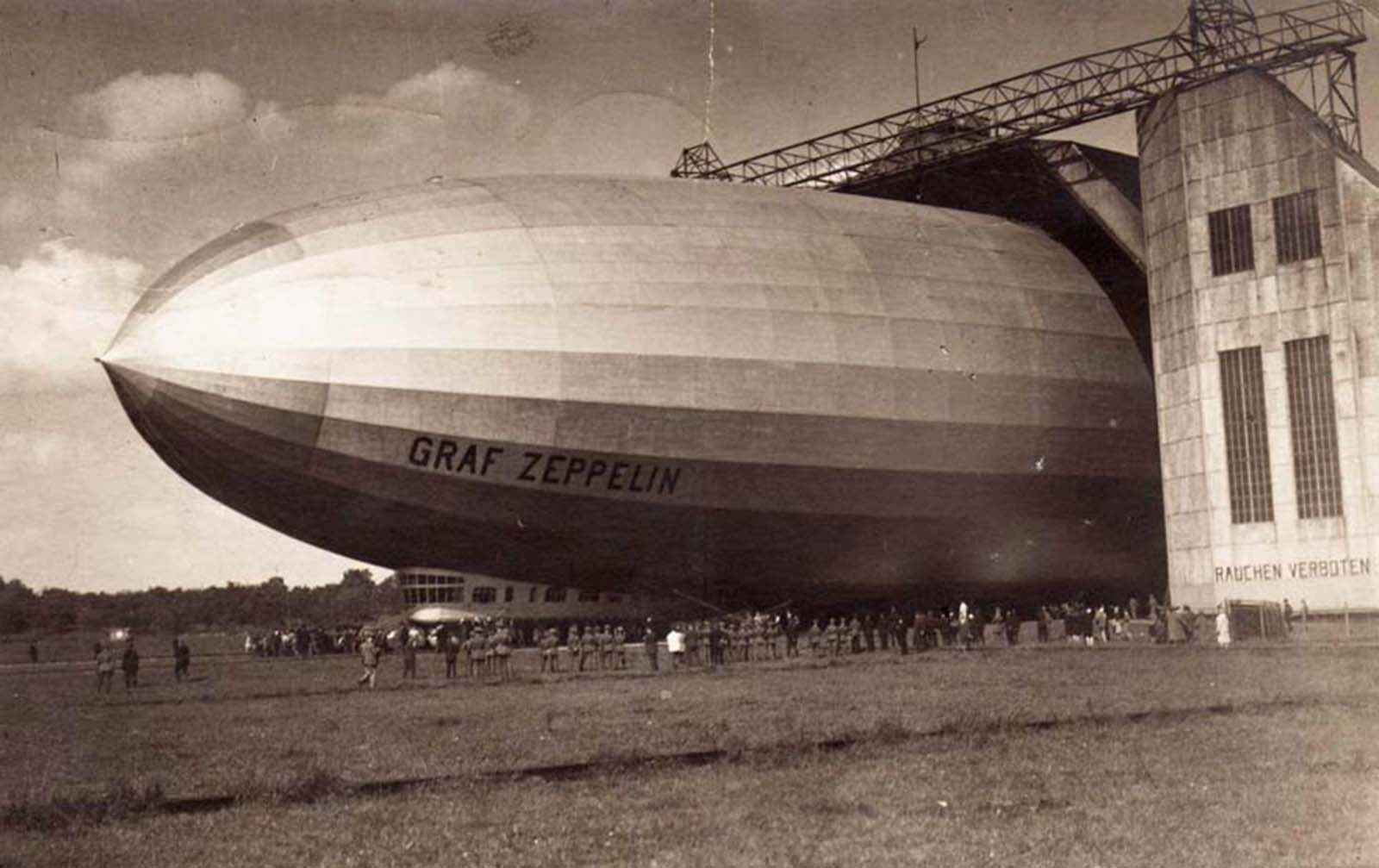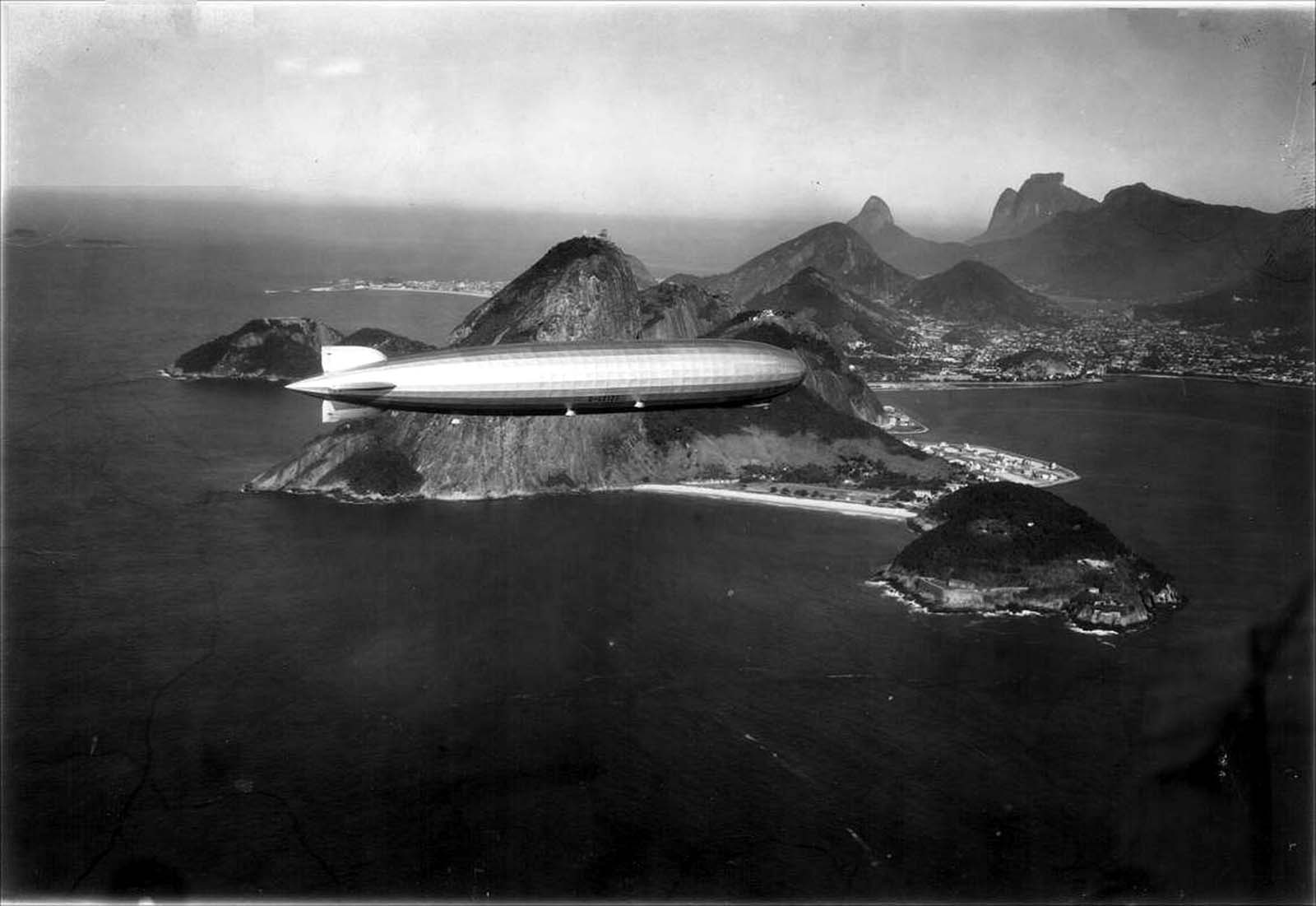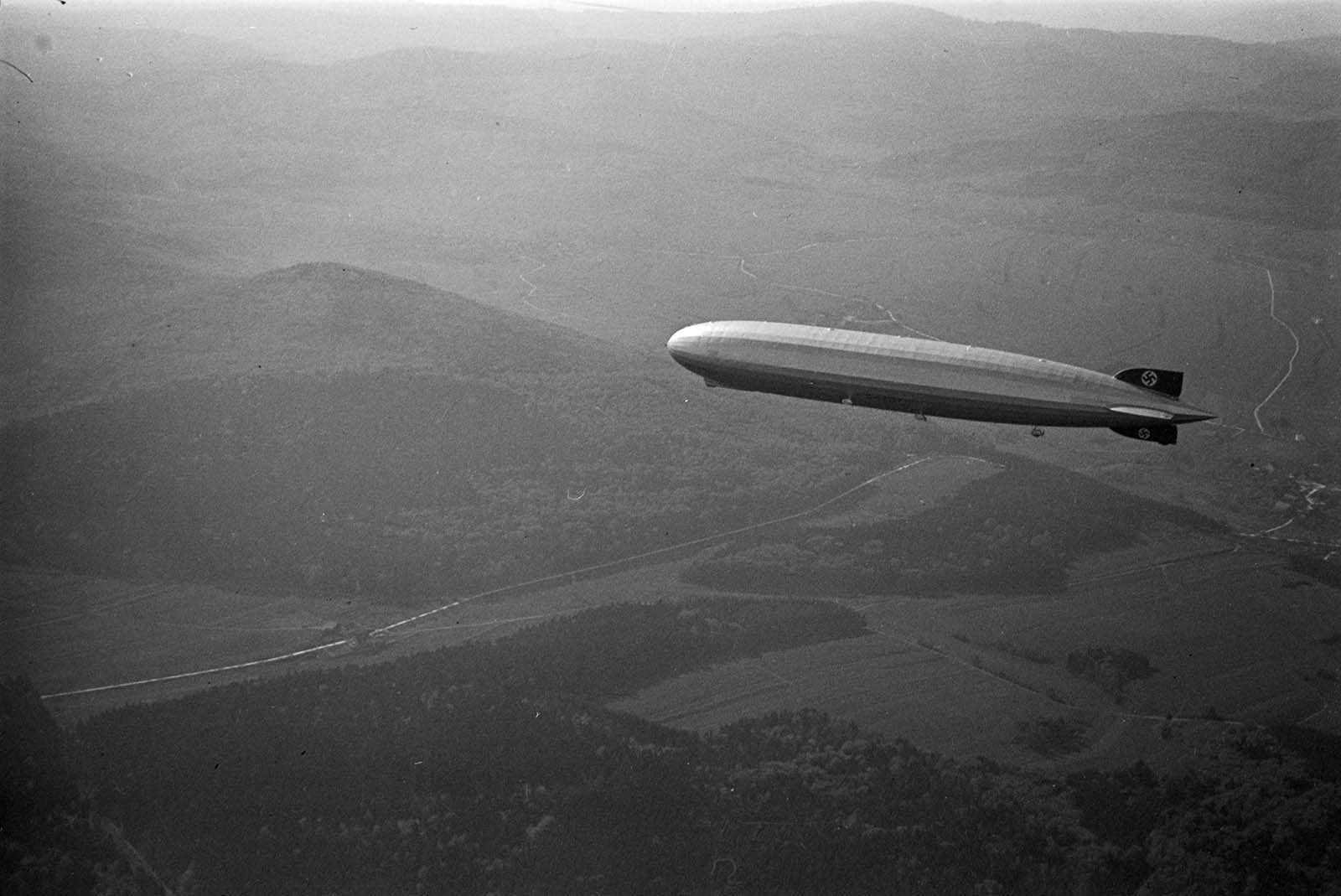During its trip around the world in August 1929, the airship Graf Zeppelin LZ 127 flew over Chicago. Airship crews flew low over the city, and the sight mesmerized the crowds. About 5:20 p.m., the magnificent airship appeared in the Loop, floated over the downtown area for 18 minutes, then disappeared in the hazy eastern sky within three minutes after leaving the lakeshore. Some of the spectators came from towns and cities a hundred miles away, filling all the buildings in the Loop and the streets. After rain threatened most of the afternoon, the clouds parted as the Zeppelin appeared. The clouds opened, and the sky cleared briefly while the big ship crossed the Loop. It circled Tribune Tower, swung south to Soldiers’ Field, then north again to Lincoln Park and away across the lake.
As the first glimpses of the Zeppelin were caught, automobile horns began to drown out the cries of onlookers. Railroad locomotives joined in the roar with their steam whistles. Tugboats and larger vessels also sounded their horns on the lake and river. The Zeppelin performed a giant “figure-eight” over Chicago, swinging north and circumnavigating Tribune Tower before passing over Soldier Field, where thousands cheered. One of the most famous flights of the Graf Zeppelin was its round-the-world voyage, covering 21,2500 miles over five legs from Lakehurst to Friedrichshafen, Friedrichshafen to Tokyo, Tokyo to Los Angeles, Los Angeles to Lakehurst, and then Lakehurst to Friedrichshafen again.
The flight was the first passenger flight worldwide and was widely covered by the world’s press. William Randolph Hearst, the American newspaper publisher who paid for about half the cost of the flight in exchange for exclusive rights in the United States and Britain, sponsored the trip. Graf Zeppelin flew 590 flights totaling almost 1.7 million kilometers (over 1 million miles). The plane had a crew of 36 and could carry 24 passengers. It was the most famous and longest airship globally when it was built. Using Blau gas as a fuel, it crossed the Pacific Ocean nonstop for the first time and completed the first round-the-world trip by airship.
Graf Zeppelin operated a commercial passenger and mail service between Germany and Brazil between 1928 and 1932, including one to the Arctic. After the Hindenburg disaster in 1937, it was withdrawn from service and scrapped for military aircraft production in 1940.
Below are some stunning historical photos that perfectly captured the excitement of Chicagoans after seeing the Zeppelin in 1929.


